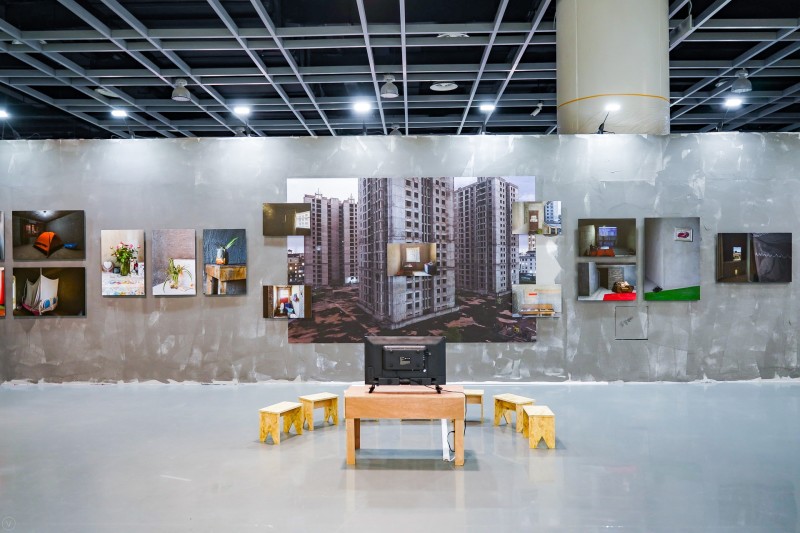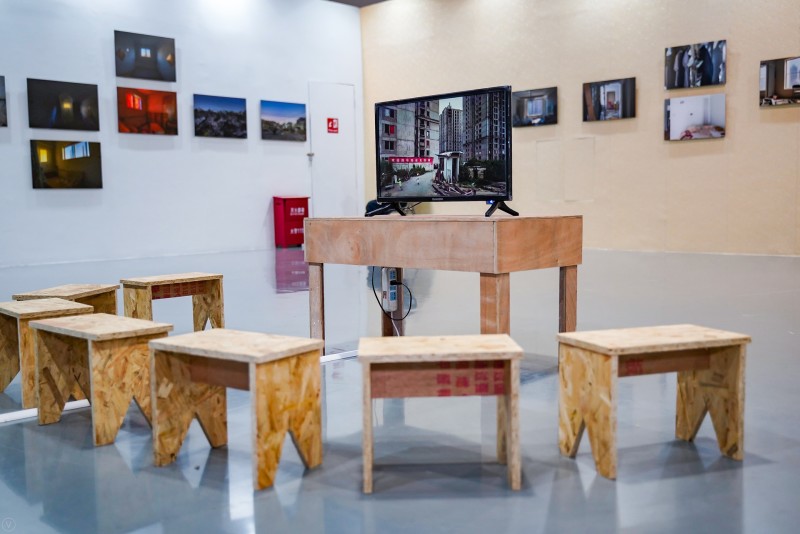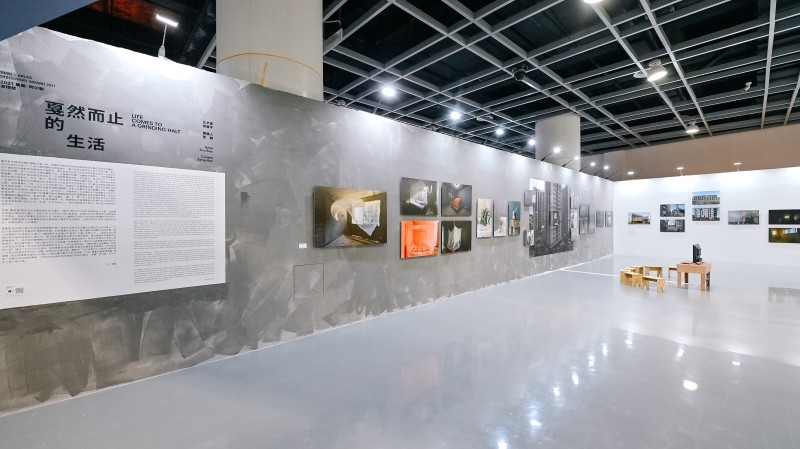ZOU BIYU
Life Comes to a Grinding Halt
Curated by Zeng Han
Like all photojournalists who supply photographs to media outlets, Zou Biyu has dutifully traveled to newsworthy places to capture events as they happen, but he often brings a tilt-shift lens—usually used to photograph architecture—to infiltrate the places where life has suddenly stopped. Like a rigorous crime or real estate photographer, he carefully records the empty, damaged spaces left in the wake of major accidents. As a result of this long-standing habit, which turned into a long-term photo project, Zou Biyu has accumulated a wealth of images of empty spaces. From a photojournalist’s perspective, these pictures have no visual impact or newsworthy aspect—they are useless. However, when they are lined up in front of us, these useless scraps immediately undergo a magical transformation into something meaningful. Every detail in every picture seems to tell us something about the lives and fortunes of the people who once lived there. They do not narrate a course of events, but like a funeral, they force the viewer to remember that the dead are already gone, and that others must continue to live. Pictures are evidence of what once existed, but this evidence also brutally lays bare the hopes and expectations that so many people had for a happy life. In the Harbor City Apartments, a complex rocked by the Tianjin explosion, the large sofas, European-style chandeliers, flat-screen TVs, and floral wallpaper highlight the owners’ middle-class fantasies. The flimsy plastic sheeting used to seal the shattered windows is a fragile symbol of the attempt to shut out reality. In cheap rental housing cleared out by a fire, the Chinese characters for “luck” or “happiness” are affixed to the otherwise bare walls. Perhaps this is where migrant workers laid down their heads to dream night after night. In the unfinished Other Style Happy City complex, the rough cement walls represent the other life and fate of the owners who did everything possible but still could not make homes in the city. They took out loans to buy apartments, but they do not know when their homes will be completed.
Susan Sontag wrote, “In fact, there are many uses of the innumerable opportunities a modern life supplies for regarding – at a distance, through the medium of photography – other people’s pain.” Because it has been photographed, this pain becomes real, but for people who have no connection to it, it is just news. The most terrifying thing about experiencing a disaster is often its representation. In a time flooded with fragmented images, regarding other people’s pain has even been reduced to the everyday swipe of a finger on a screen. Zou Biyu trains his tilt-shift lens on these accident sites in an attempt to offer a spatial perspective that might correct the record, transforming the pictures into mementos imbued with a sense of ceremony, like the portrait of the deceased at a funeral.
Marcel Proust believed that pictures invent or replace memory, but pictures themselves cannot preserve meaning as memory does; they provide a reliable and serious exterior, but they do not have that component of meaning. Meaning only results when a picture is understood. What is the point of taking photographs? Which photographs will be remembered? John Berger once wrote:
Memory implies a certain act of redemption. What is remembered has been saved from nothingness. What is forgotten has been abandoned. If all events are seen, instantaneously, outside time, by a supernatural eye, the distinction between remembering and forgetting is transformed into an act of judgment, into the rendering of justice, whereby recognition is close to being remembered, and condemnation is close to being forgotten. Such a presentiment, extracted from man’s long, painful experience of time, is to be found in varying forms in almost every culture and religion […].
In today’s reality, as computer algorithms attempt to usurp that supernatural eye and control our choices with regard to memory, is the photographer who focuses on reality simply tilting at a massive, imaginary windmill like Don Quixote? John Berger suggests that a photographer should think of “her or himself not so much as a reporter to the rest of the world but, rather, as a recorder for those involved in the events photographed.” Perhaps a photographer is more like Sisyphus, pushing the stone of reality uphill; the pictures you take only have meaning and value when they prove that you are still living.
By Zeng Han











